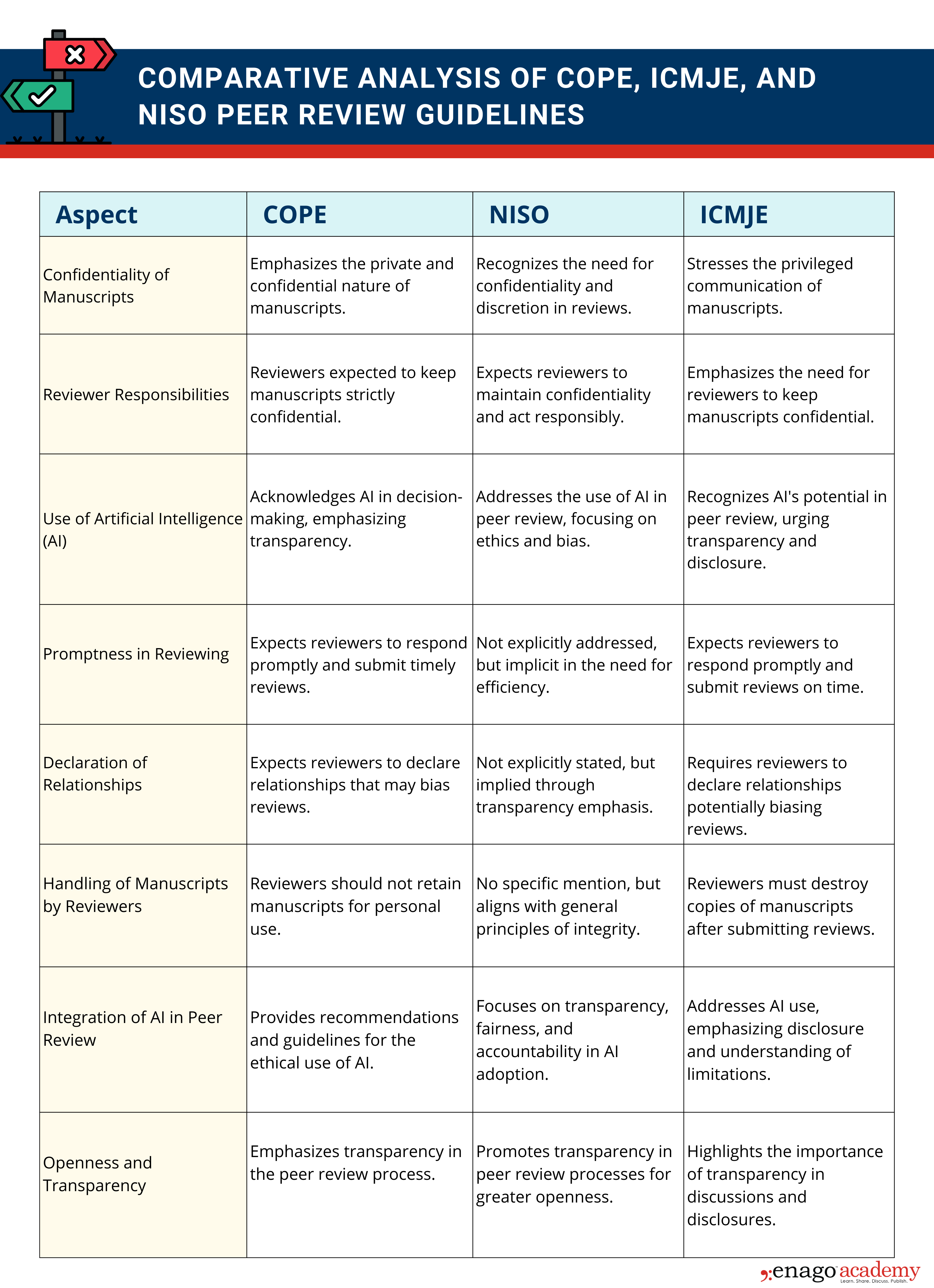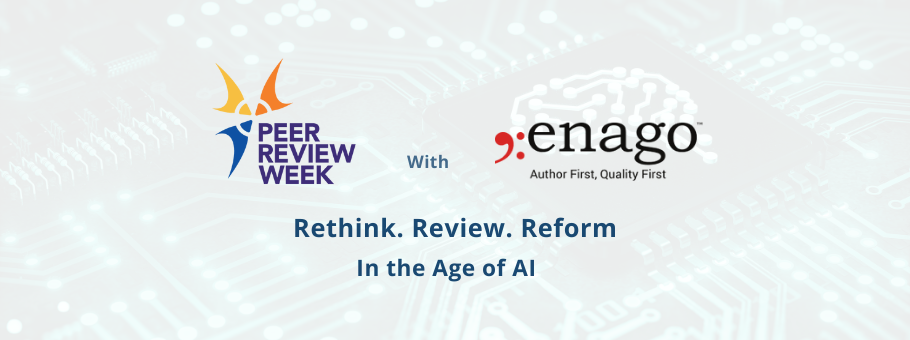Ensuring Ethical Peer Review: A comparative analysis of COPE, ICMJE, and NISO guidelines

Peer review is a cornerstone of the academic and scientific publishing process which ensures the quality, rigor, and credibility of research publications. In an era marked by ever-expanding technological advancements, it’s crucial to understand the guidelines and policies that shape this process. This article aims to provide a comprehensive overview of the peer review policies set forth by the Committee on Publication Ethics (COPE), the International Committee of Medical Journal Editors (ICMJE), and the National Information Standards Organization (NISO).
Committee on Publication Ethics (COPE)
The COPE guidelines emphasize the confidential nature of manuscripts, recognizing them as authors’ private property. Reviewers are entrusted with the responsibility of maintaining strict confidentiality, refraining from public discussions, and avoiding appropriation of ideas before publication. Notably, COPE also addresses the emerging role of artificial intelligence (AI) in decision-making. COPE’s stance on AI underscores the need for transparency, accountability, and human oversight in the integration of AI tools into the peer review process.
International Committee of Medical Journal Editors (ICMJE)
ICMJE shares COPE’s commitment to confidentiality, stressing that manuscripts are privileged communications and reviewing should be conducted with the utmost discretion. In line with the evolving technological landscape, ICMJE acknowledges the potential use of AI in the review process. The guidelines highlight the importance of reviewers disclosing if and how AI technology is employed, as well as the necessity of understanding the limitations and potential biases of such tools.
National Information Standards Organization (NISO)
NISO recognizes the transformative role of peer review in scholarly communication. Their efforts include the development of standard definitions and best practices to bring clarity and consistency to the diverse models of peer review. Addressing the need for transparency, NISO emphasizes openness and communication in the peer review process. Furthermore, NISO is at the forefront of the discussion on the ethical use of AI in peer review, offering recommendations to ensure non-discrimination, fairness, and robust governance in AI-assisted decision-making.
The Comparative Analysis of COPE, ICMJE, and NISO Peer Review Guidelines
 Each organization shares a commitment to confidentiality, reviewer responsibilities, and the ethical use of AI. Differences in emphasis exist, such as COPE’s explicit guidelines on the use of AI and ICMJE’s detailed expectations for promptness and the handling of manuscripts by reviewers. Understanding these distinctions helps journals tailor their practices to align with the principles that resonate most with their publishing objectives.
Each organization shares a commitment to confidentiality, reviewer responsibilities, and the ethical use of AI. Differences in emphasis exist, such as COPE’s explicit guidelines on the use of AI and ICMJE’s detailed expectations for promptness and the handling of manuscripts by reviewers. Understanding these distinctions helps journals tailor their practices to align with the principles that resonate most with their publishing objectives.










I need information for my lectures.